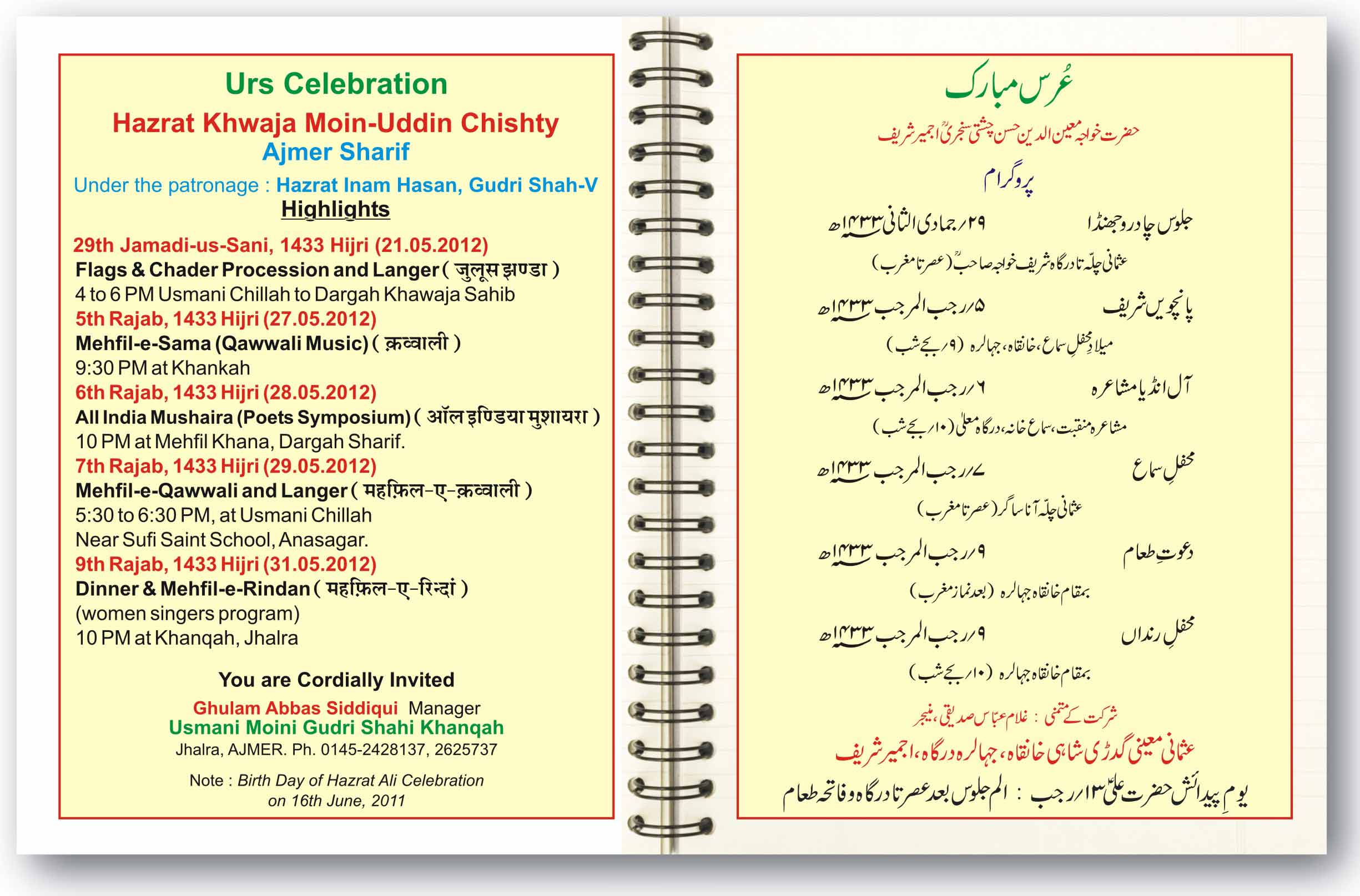
Where is Ajmer?
Ajmer is an important city, with a population of about 400,000 people, located in the state of Rajasthan, India. It is about 132 kms west of Jaipur and rests in the lap of the serene and beautiful surroundings of the Aravalli Range of hills.
A Brief History
Situated in the heart of the Rajasthan desert, Ajmer offers a compatible blend of Sufi culture and Hindu religion. For long, Ajmer was always a politically and spiritually important centre for the Rajputs, the Mughals and the Marathas. It was the seat of administration for the Chauhans till, in 1193, the army of Mohammad Ghori defeated Prithviraj Chauhan. Thereafter, it became a part of the Sultanate of Delhi. However, the Rajputs regained the control of the city with the crusades of Rana Kumbha of Mewar and Raja Maldeo. Now, Ajmer is an important spiritual and cultural centre of India and people from all walks and religions of life throng to the city to seek the blessings of Hazrat Khwaja Moinuddin Hasan Chishti, whose shrine is located in the heart of the city.
How to reach Ajmer
Ajmer can be easily accessed through air, train or road. While the nearest airport is about 138 kms, in the city of Jaipur, the capital of Rajasthan, the easier way is to take a train to the city.
Air: Jaipur Airport, about 138 kms from Ajmer. Fly in to Jaipur. Thereafter, take a train or a bus to Ajmer.
Rail: Ajmer is well connected with the major cities of India through a Rail network. You can get direct trains to Ajmer from Delhi, Jaipur, Ahmedabad, Udaipur, Abu Road, and Jodhpur. To reach from other cities, you will have to change trains at one of the mentioned locations.
Road: Regular Buses operate from most cities. However, Delhi, Rajashtan and Gujarat offer a good frequency of service. During the Urs time, one can find additional bus services from other cities as well
Accommodation
There are a host of RTDC (Rajasthan Tourism Development Council) motels and hotels, which offer a comfortable stay in the city. There are also a couple of Deluxe Hotels, which though expensive, are luxurious and comfortable.
Hotel
Hotel Jannet Dargah, Ajmer
RTDC Hotel Khadim
RTDC Hotel Khidmat
Haveli Heritage Inns
Hotel Man Singh
RTDC Hotel Sarovar (Pushkar)
RTDC Tourist Village (Pushkar)
Hotel Pushkar Palace (Pushkar)
Ajmer Map
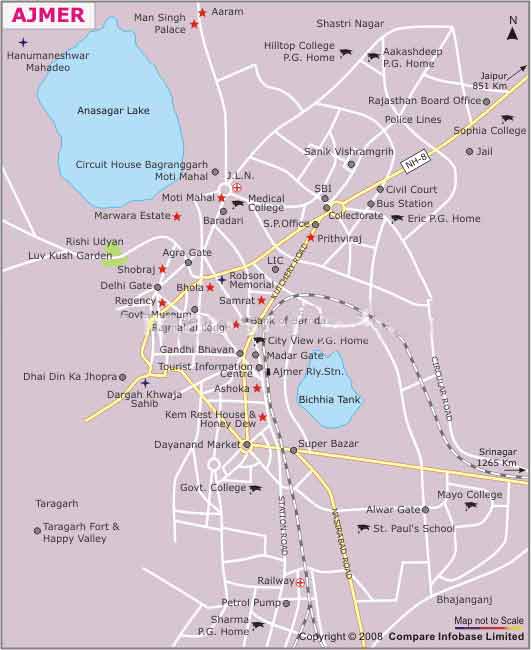
For further information, contact
Tourist Information Bureau,
RTDC Hotel Khadim, Ajmer. Phone: 252426
Phone
0145-2430108
252490
252705
2621607
250875
22040
22070
22001
Climate
Temperatures are very high during summers and very low during winters. Ajmer has a typical desert type of climate. The best period to visit Ajmer is between October and March.
What to see
Ajmer offers a plethora of spiritual and cultural delights. We list below a selection of major attractions of Ajmer.
Dargah ShariefIt is the final resting-place of the Sufi Saint Khwaja Moinuddin Hasan Chishti. The Dargah of Gharib Nawaz is visited by millions of people from all over the world, irrespective of caste and religion. For more details, click here. |
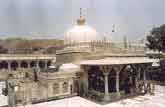 |
Chillah Sharief of Hazrat Ghous-Ul-AzamThe place of meditation of Hazrat Abdul Qadir Jilani (ra), better known as Ghous-Ul-Azam is located atop a hill overlooking the shrine of Hazrat Khwaja Moinuddin Hasan Chishti.Ghous-Ul-Azam was a contemporary of Hazrat Usman Harooni and Hazrat Khwaja Moinuddin Hasan Chishti. He was a great Sufi Saint and has left for humanity a treasure of writings and teachings based upon the tenets of the Holy Quran and the Hadith. He was the founder of the Qadirriya Order of Sufis. Millions of devotees throng to his Chillah to invoke his blessings. Chillah Sharief of Hazrat Khwaja Moinuddin Hasan Chishti and the Usmani ChillahSituated atop a hill overlooking the Ana Sagar Lake, the Chillah Sharief is where Khwaja Gharib Nawaz meditated for forty days continuously. Here also lie the holy relics of his spiritual guide, Hazrat Khwaja Usman Harooni. Flanking the sides of the meditation place of Khwaja Gharib Nawaz are the holy shrines of the Saints of the Gudri Shahi Order. For more details on the Chillah Sharief, click here. |
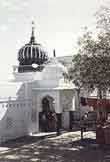 |
Adhai-Din-Ka JhonparaOne of the finest examples of Indo-Islamic architecture, this mosque was a Sanskrit college in the 12th century. In 1193 AD Mohammad Ghori converted the college into a mosque. The mosque is built on pillars and surprisingly no two pillars are alike. The archways are finely engraved with Kufi and Jughra inscriptions from the Holy Koran. It is said that the entire mosque was reconstructed in an amazingly short period of two and a half days - thus the name Adhai Din Ka Jhonpara (A hut of two and a half days) The MuseumThe Royal Palace of Akbar was converted into a museum and today it houses a rich collection of Mughal and Rajput armoury. Many fine and delicate sculptures of the region have been displayed here. The building itself is constructed in red sandstone, which has been laid in a square pattern giving it a beautiful look. |
|
Taragarh FortBuilt in the 7th century by Ajaipal Chauhan, the fort gives a bird's eye view of the city. Taragarh Fort or the 'Star Fort' is situated on a hill and to reach there, one has to take winding bridle path. Situated atop the hill is the Holy Shrine of Martyr Sawar Sharief. Ana Sagar LakeAna Sagar Lake is located towards the north of the city. The famous lake was built between 1135-1150 AD by Anaji. Later, the Mughal Emperors made additional constructions around the lake to add to its splendour. Shah Jahan built a marble pavilion now called the Baradari, while Emperor Jehangir laid the beautiful Daulat Bagh gardens, where people still go in plenty to walk and enjoy the greenery. |
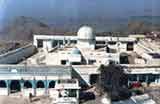 |
Nasiyan (Jain Temple)This red coloured temple was built in the late 19th century. The wooden gilt in the double storied hall depicts scenes from Jain mythology. It is an interesting place to visit. Offers examples of fine craftsmanship. |
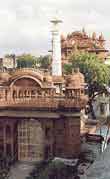 |
PushkarThe Sister City of Ajmer, Pushkar is only 11 Kms away from the city. The road to Pushkar passes through the Nag Pahar or the Snake Mountain. It is a sacred city of Hindus and boasts of the only existing temple in Asia dedicated to Lord Brahma. According to Hindu Mythology, this lake was formed when a lotus flower fell in the valley from the hands Lord Brahma. There are 52 bathing ghats around the Pushkar Lake and each of them is supposed to be endowed with special mystical powers. For instance, the Naga Kund is for fertility, the Roop Tirth is for beauty while the Kapil Vyapi Kund is said to possess powers that can help cure Leprosy. The famous Pushkar fair is held every year on the Kartik Purnima (Full moon during the Hindu month of Kartik). This fair is famous for its animal bazaar where cattle and herds of camel are traded between villagers from nearby. A time for celebrations and festivities is made bright and colourful with folk dancers and traditional folk musicians performing round the clock. |
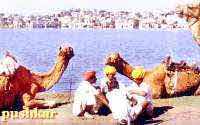 |
KishanGarhKishangarh was an ancient school of art where painting miniatures had reached a pinnacle of excellence and worldwide acclaim. 27 Kms from Ajmer, towards Jaipur, Kishangarh is now an important town for Marble mining and trade. This town of artists is also famous for Gundelao Lake, Phool Mahal Palace, Temple of Sri Kalyan Raiji and the Majhala palace. |
|

















































